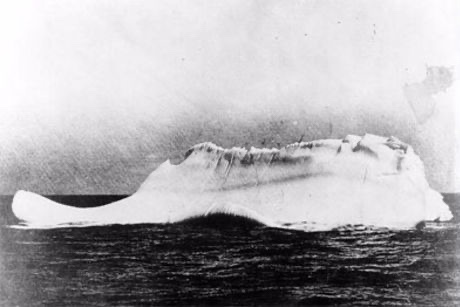One of my favorite books of all time is Walter Lord’s A Night to Remember, a retelling of the Titanic’s demise. I finally got around to watching Roy Ward Baker’s 1958 film adaptation of the book on a beautiful Criterion Blu-ray from the library, and it got me wondering: what about the iceberg?
In both the 1958 film and James Cameron’s mega-blockbuster, we get some ominous shots of the iceberg as the ship tries to avoid it, and then some ice chunks sliding across the deck. But after that, the iceberg disappears. For how much we know about the Titanic and its passengers, there’s far less out there about what turned the Titanic story into legend.
I love this article from Gizmodo that charts the iceberg’s incredible journey, beginning as “snowfall on the western coast of Greenland somewhere around 1,000 BCE” and ending when it “likely broke off from Greenland in 1910 or 1911 and was gone forever by the end of 1912 or sometime in 1913.” In all likelihood, “the iceberg that sank the Titanic didn’t even endure to the outbreak of World War I, a lost splash of freshwater mixed in imperceptibly with the rest of the North Atlantic.”
Despite that, we have pictures of it! Not an easy feat in 1912:

In the parlance of The Rewatchables podcast, this may be one of the greatest heat-check performances by a natural formation in history. Basically comes out of nowhere, ventures far beyond where it should be, gets suddenly and violently rammed in the middle of the night by an enormous ship, then melts away within the year.
Such an improbable journey dovetails with the fate of the Titanic itself, as Lord wrote in the original book:
What troubled people especially was not just the tragedy—or even its needlessness—but the element of fate in it all. If the Titanic had heeded any of the six ice messages on Sunday . . . if ice conditions had been normal . . . if the night had been rough or moonlit . . . if she had seen the berg fifteen seconds sooner—or fifteen seconds later . . . if she had hit the ice any other way . . . if her watertight bulkheads had been one deck higher . . . if she had carried enough boats . . . if the Californian [just ten miles away] had only come. Had any one of these ifs turned out right, every life might have been saved. But they all went against her—a classic Greek tragedy.

Reply